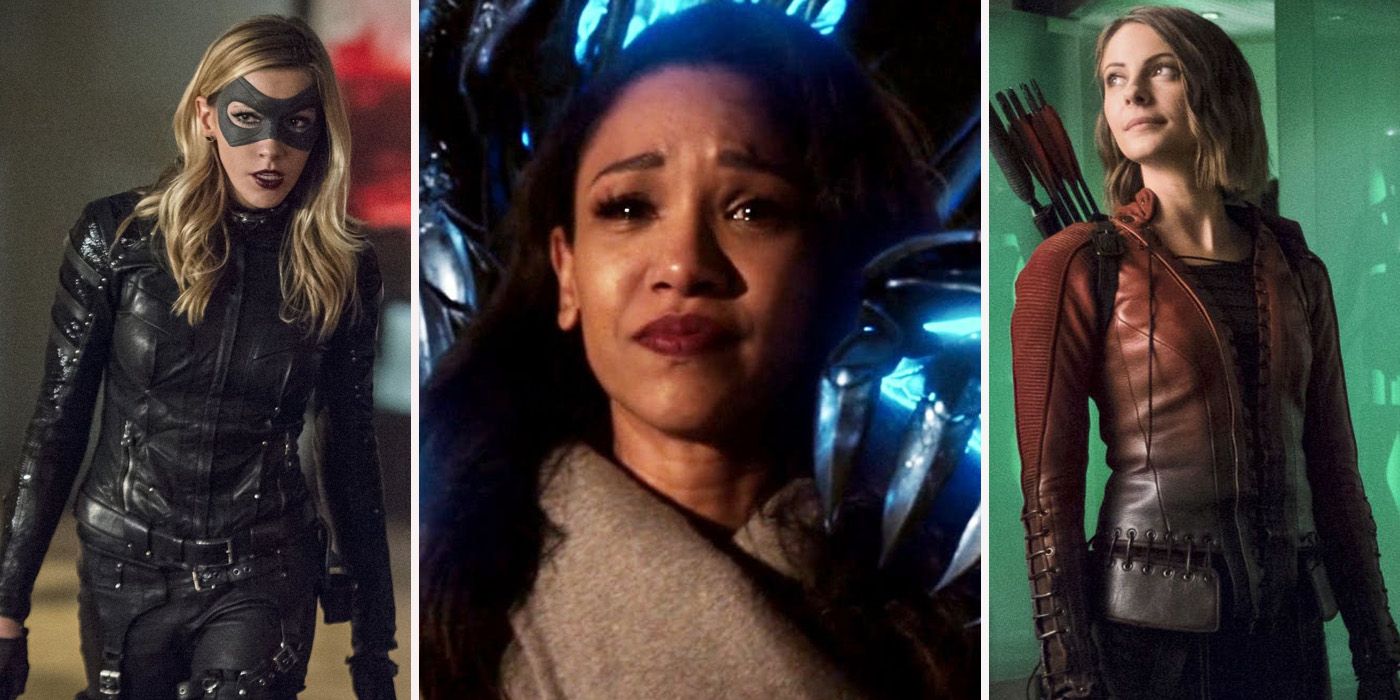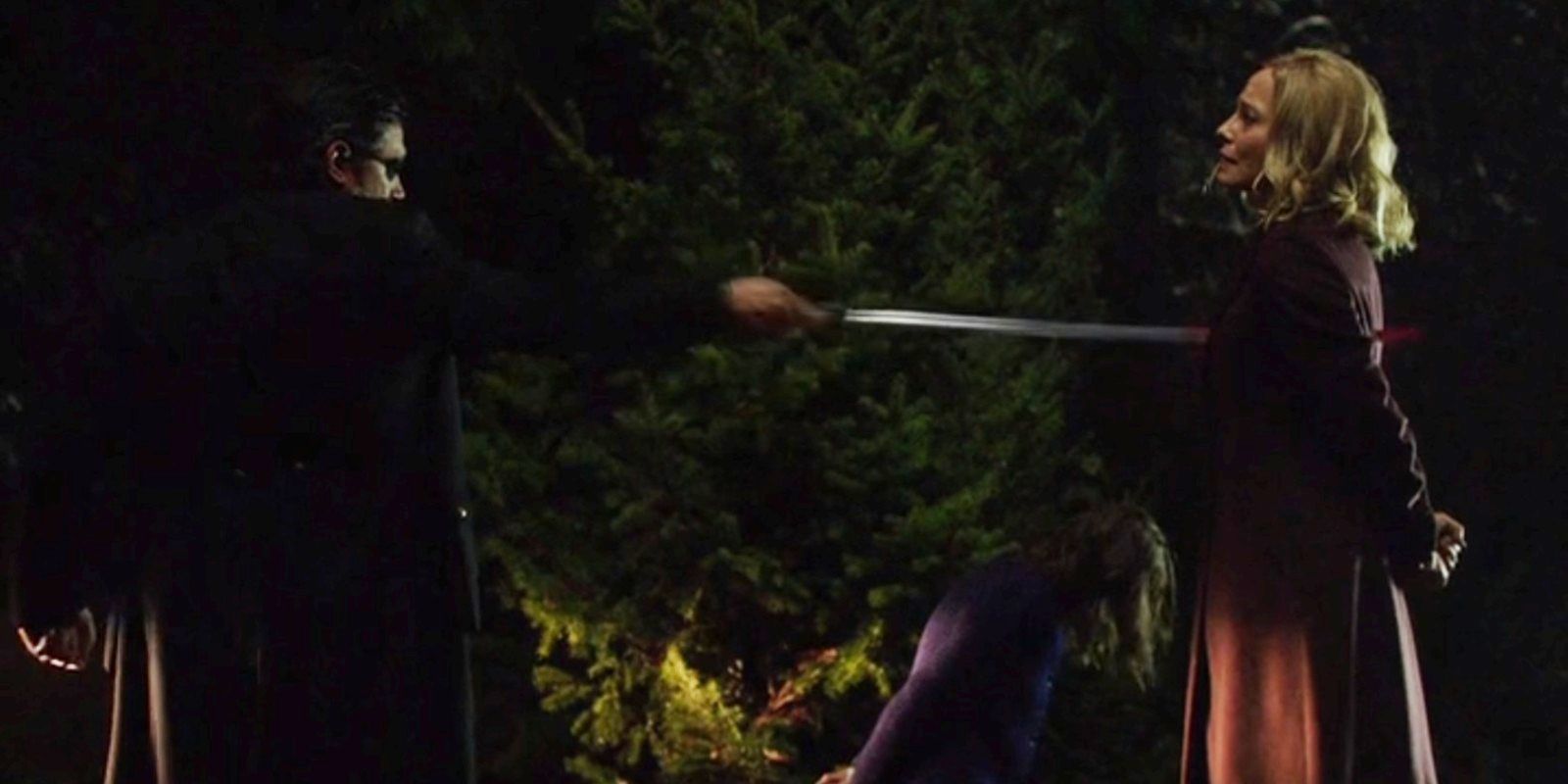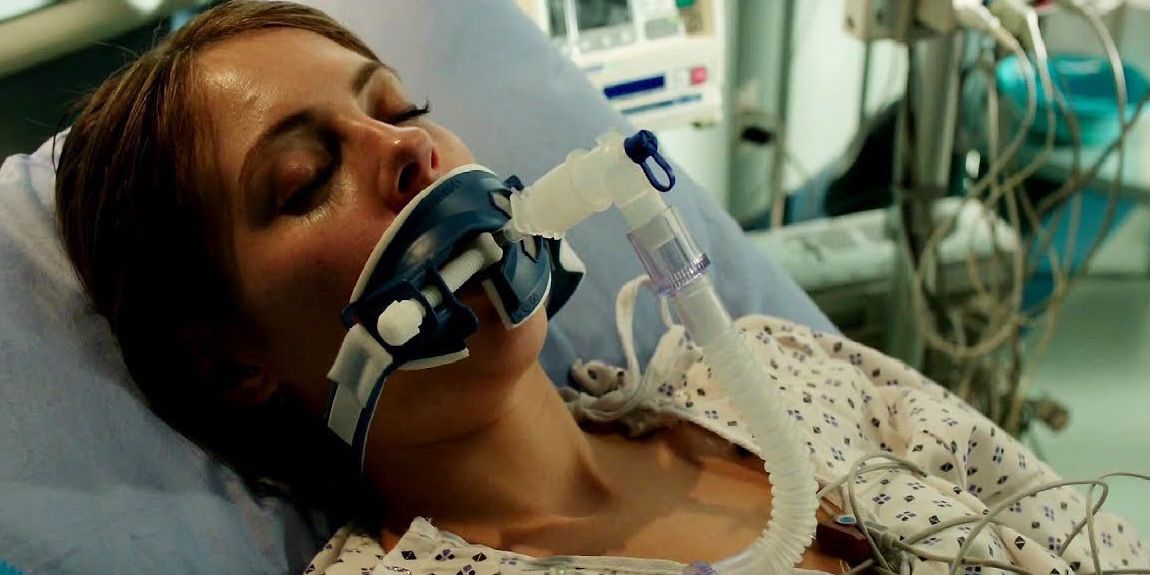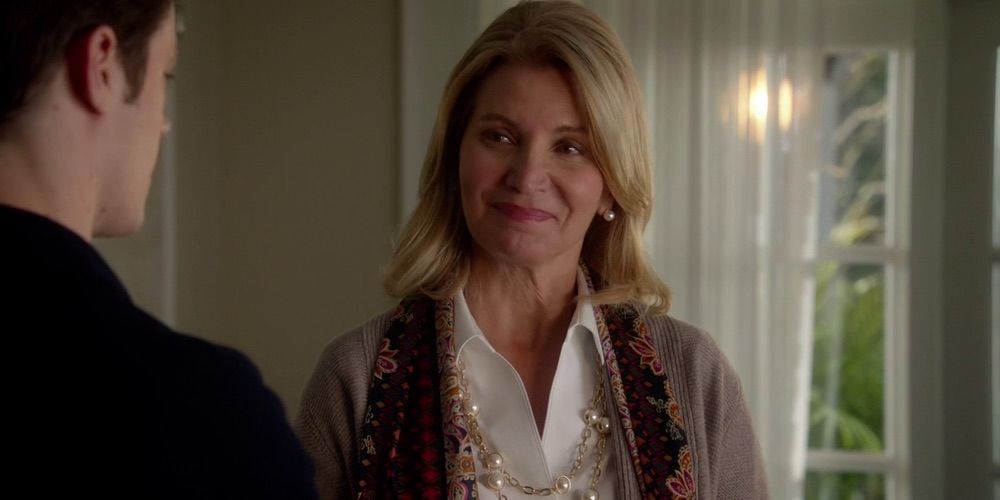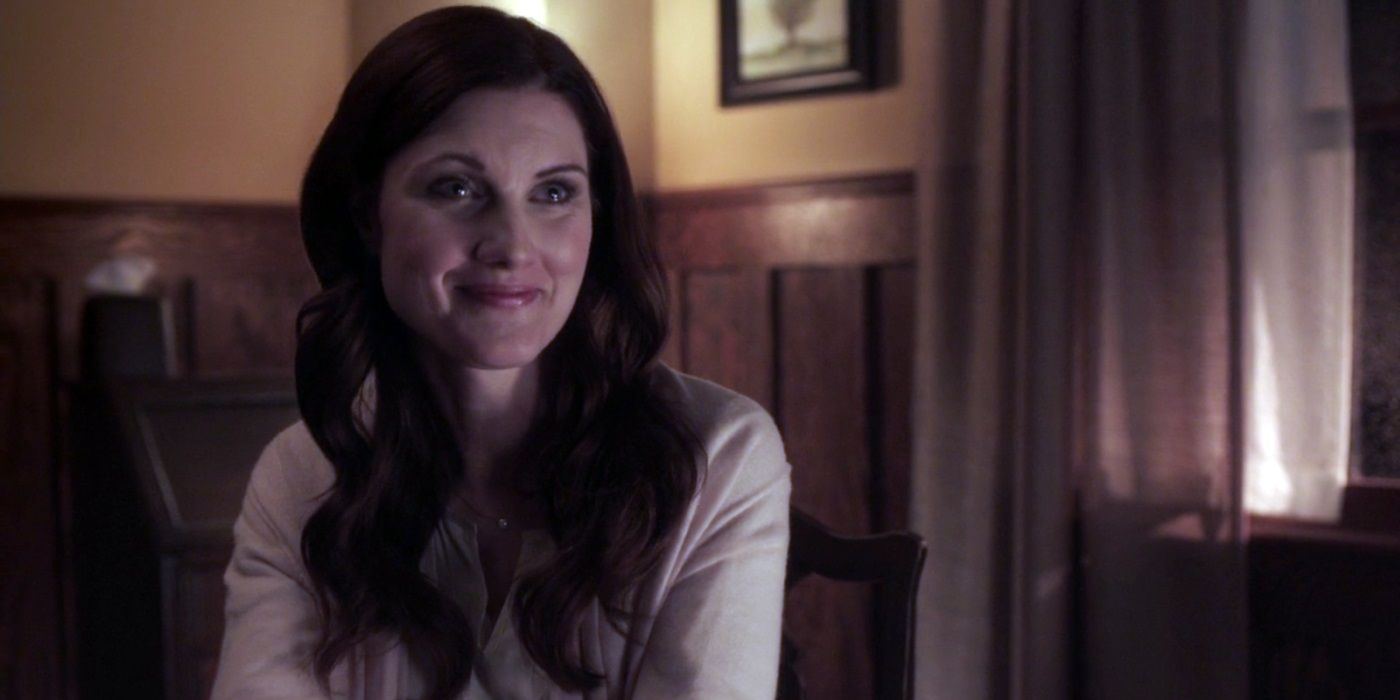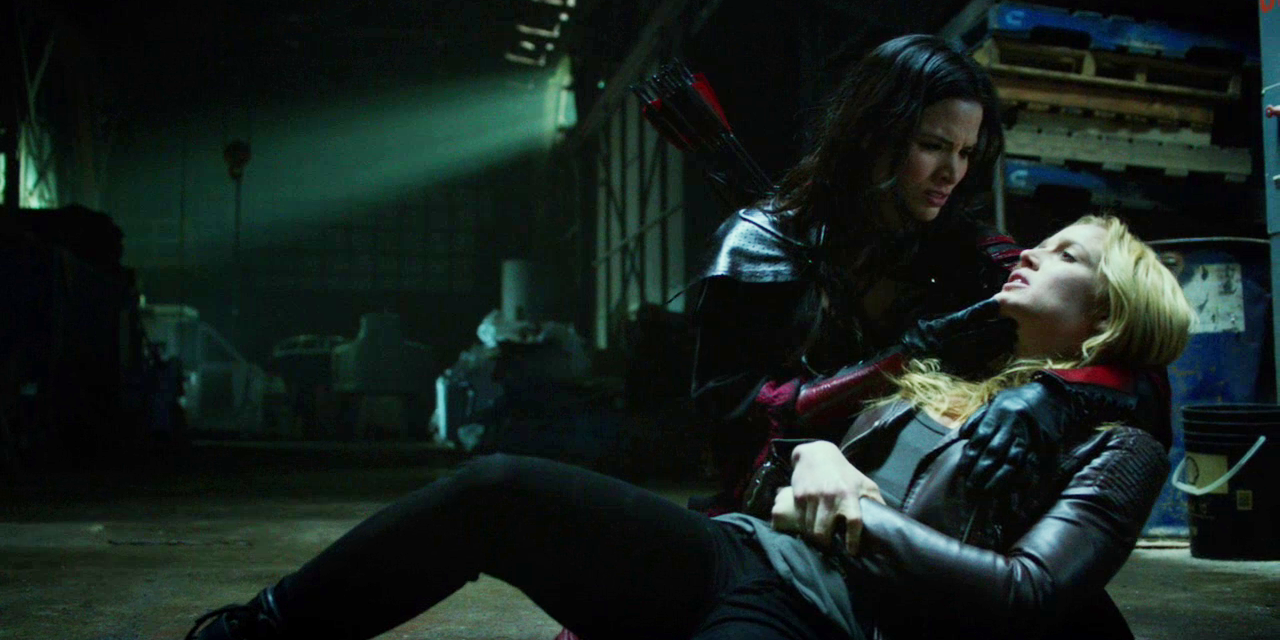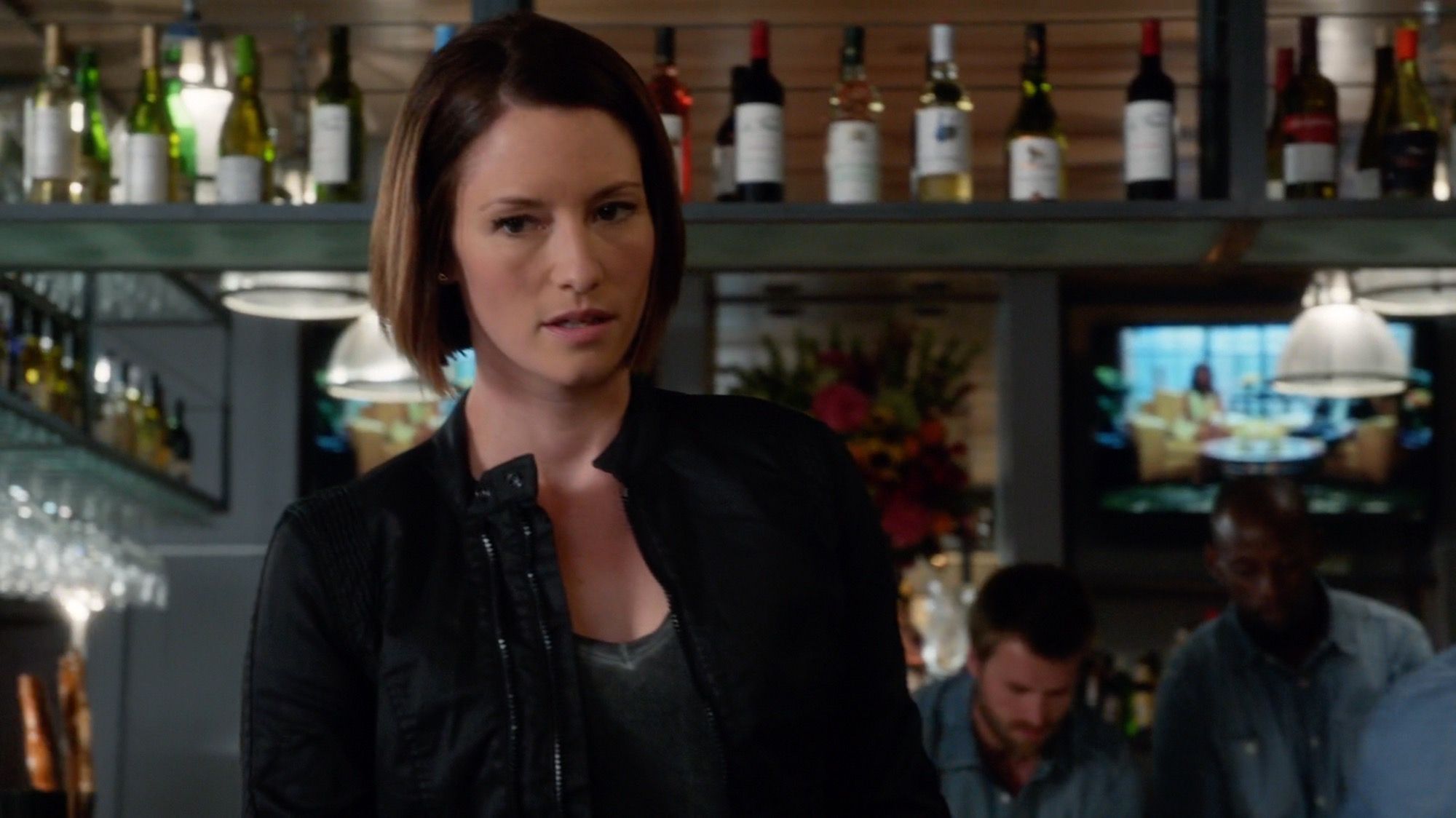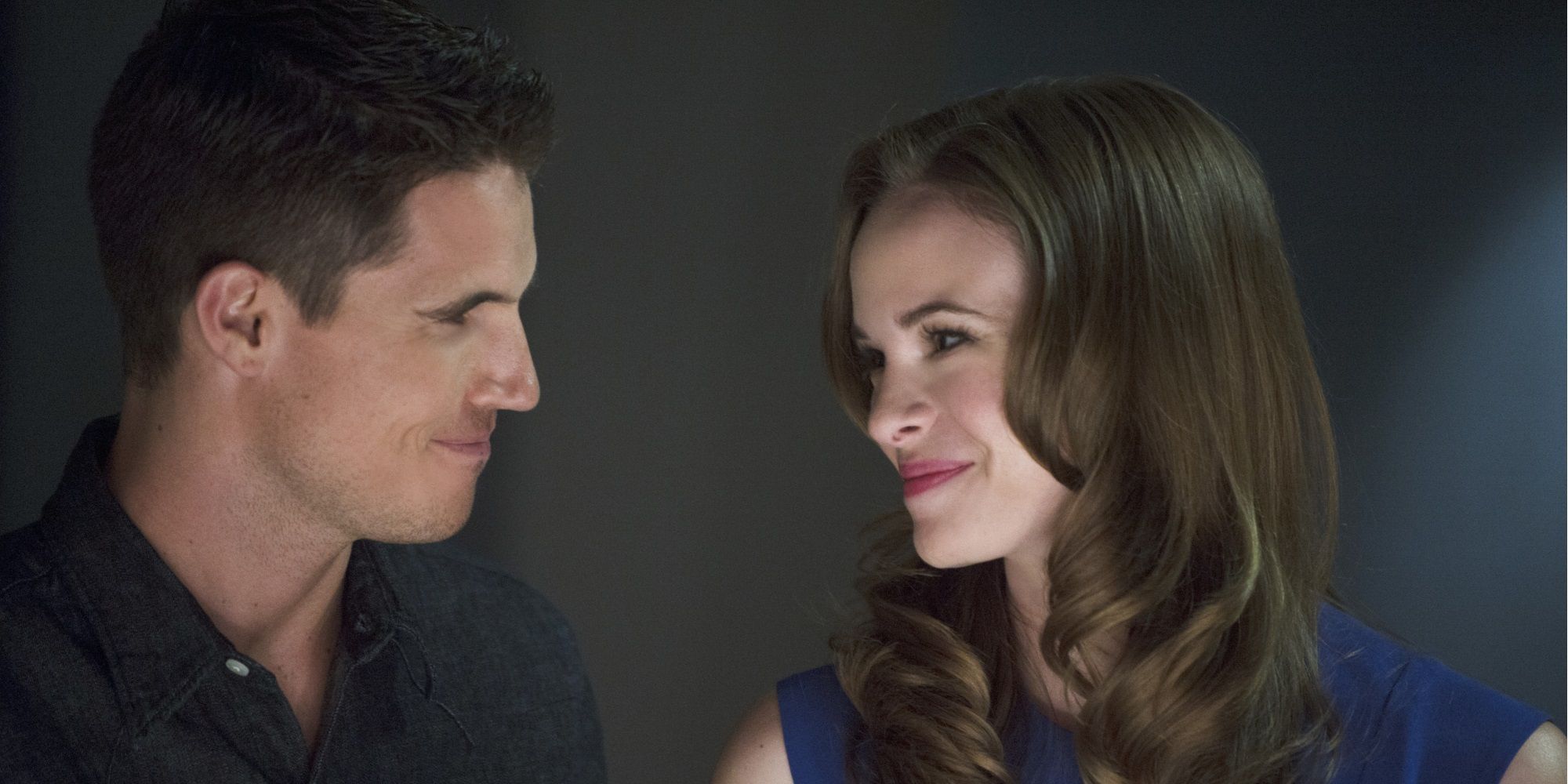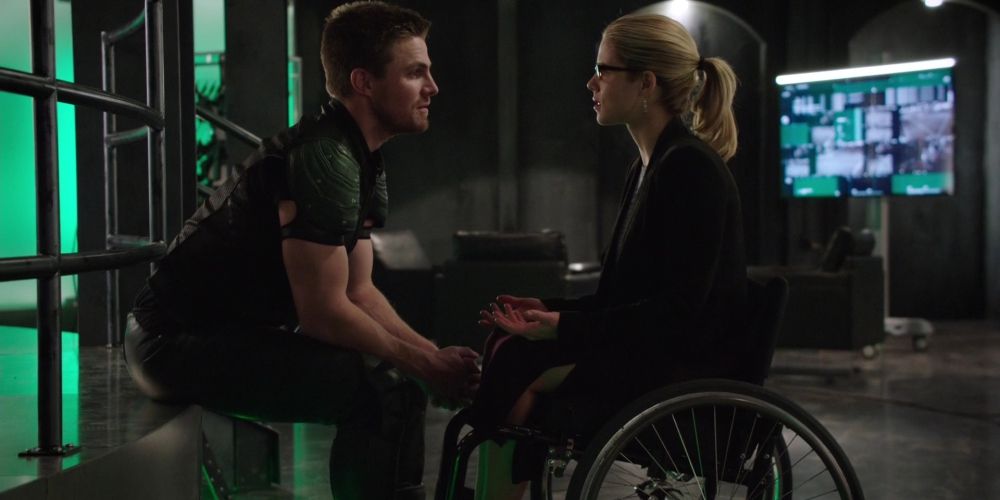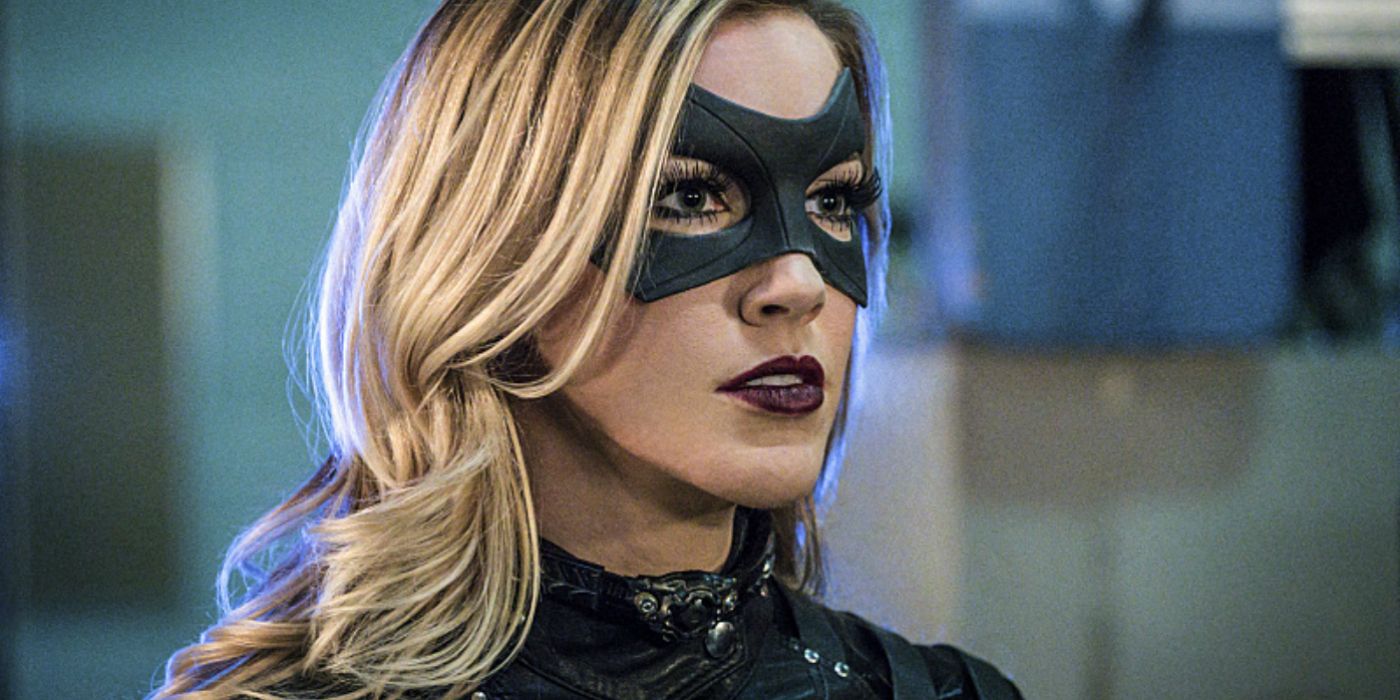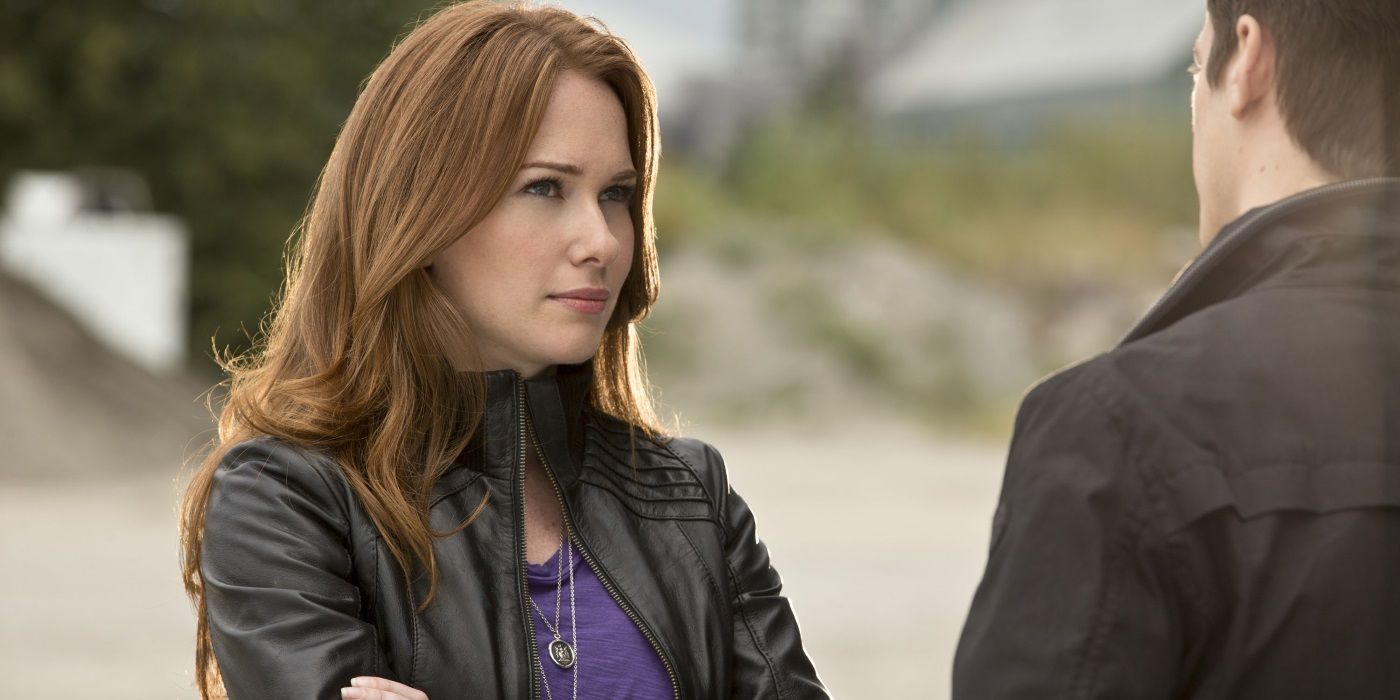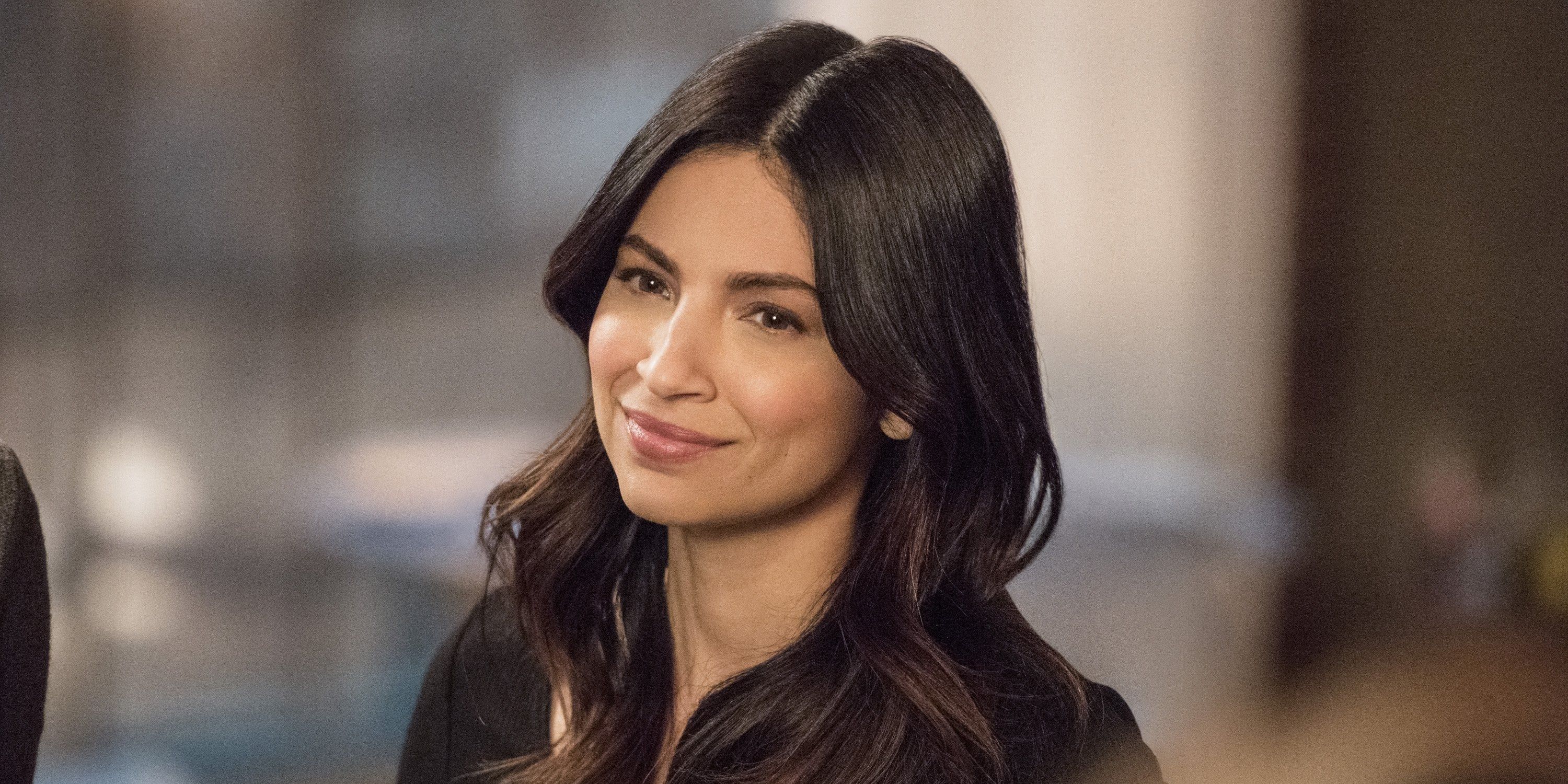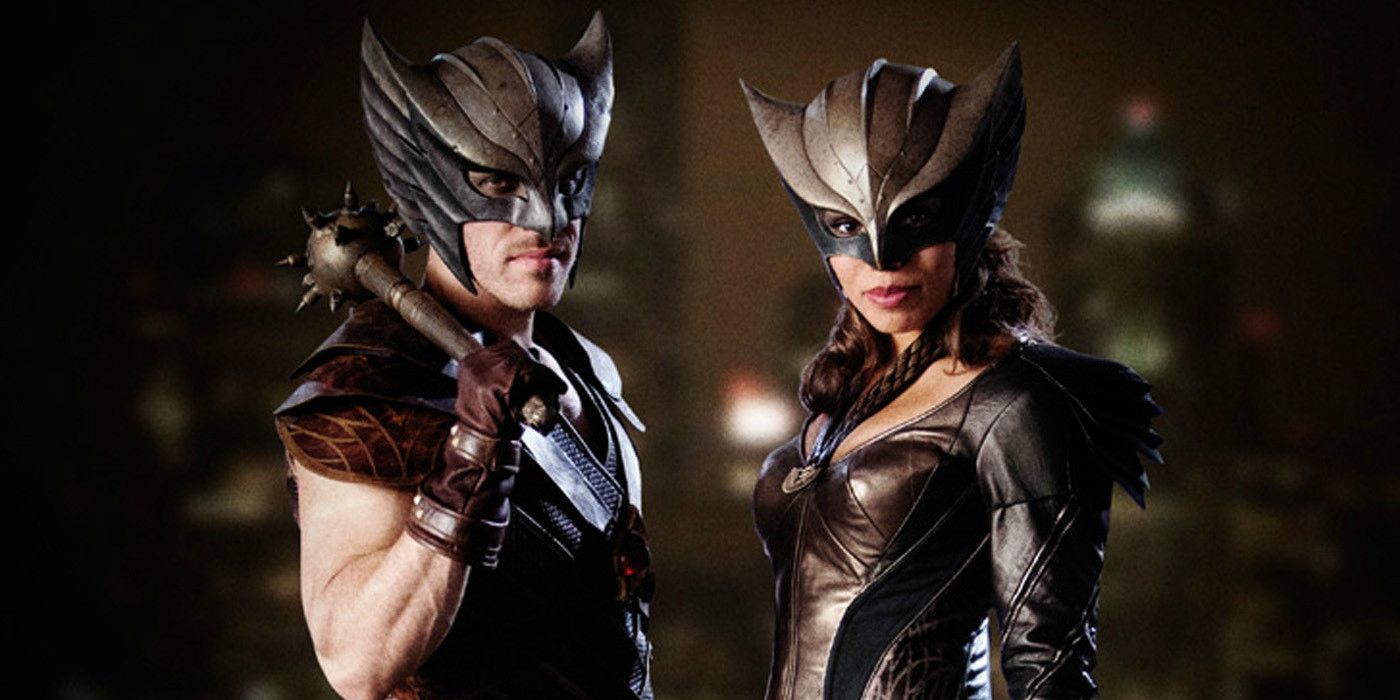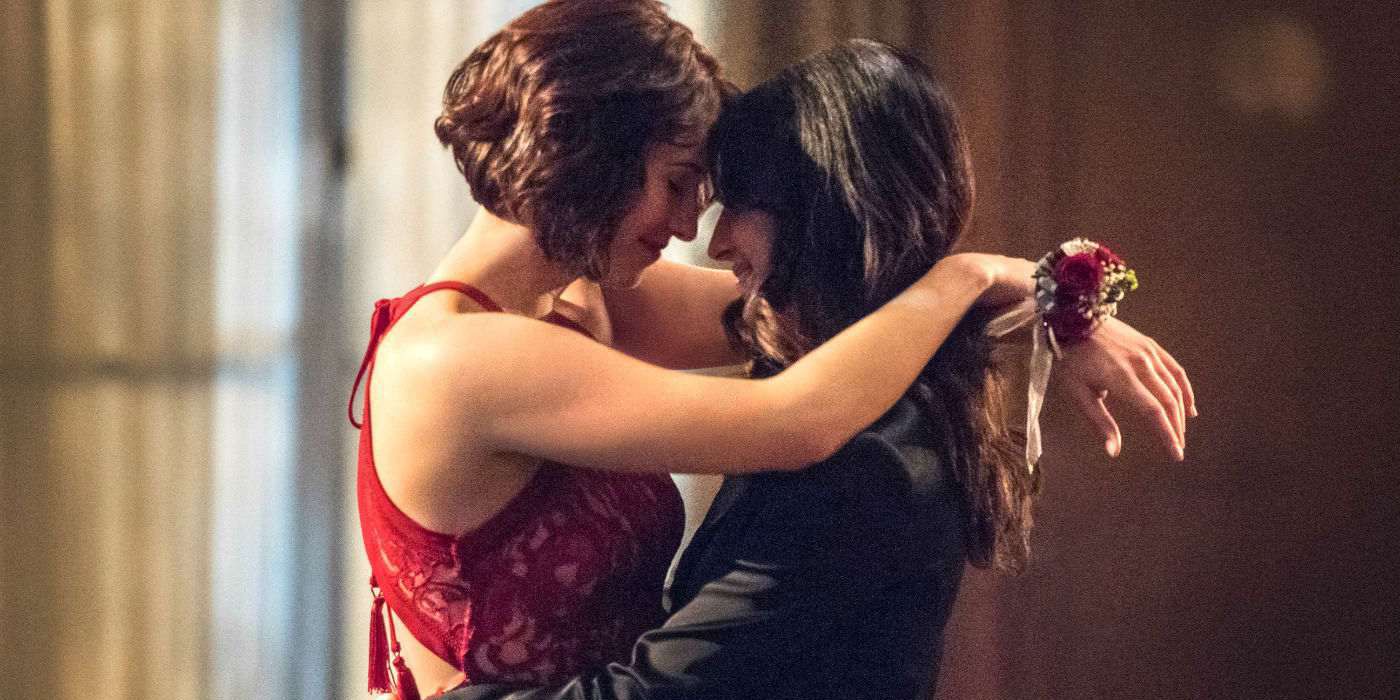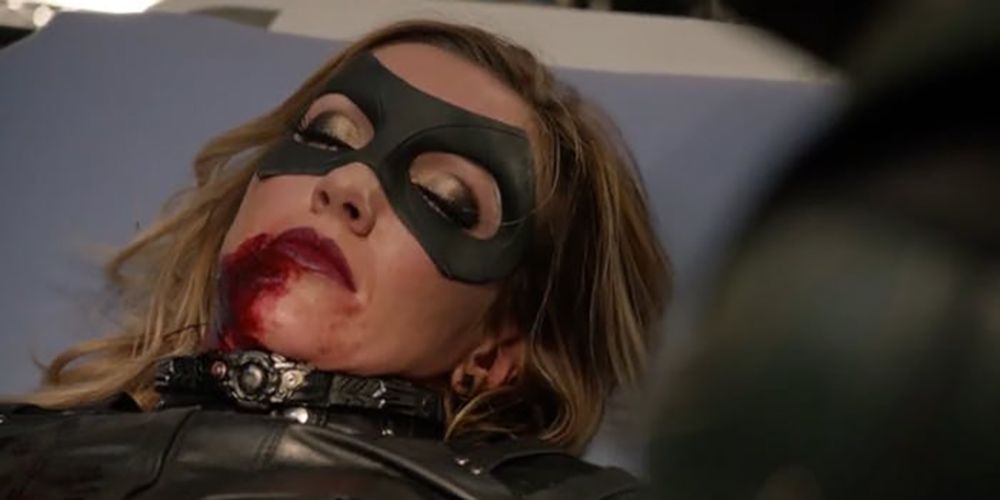The Arrowverse is filled with a diverse cast of characters who are heroes, villains, anti-heroes, human, alien and meta-human. Each has their own story, some hopeful and promising, others tragic and inherently sad. Many are far more nuanced, though. Courtesy of careful development, there are characters who have arcs that relatively reflect the human condition -- in several instances, things are looking up; later, however, their lives may take a turn for the worse. While these nuances are applied to both men and women in the Arrowverse, the ladies are often on the receiving end of the hardest of hardships.
RELATED: 17 Arrowverse Weapons Ranked From Weakest To Most Powerful
The adversity a few of the women undergo is delved into brilliantly. Some misfortunes are explored cursorily, sans proper development. Others appear to begin intricately with storytelling worthy of commendation, but ultimately fail to pay off as the narrative concludes. Still, there are a number of women in the Arrowverse who are gifted little to no development at all; they are either “fridged,” cast as props of a sort, or have entire character arcs dependent on their relationships to the men around them. These characters and their tribulations warrant acknowledgement. In this list, we’ll examine 15 of the worst things to happen to women in the Arrowverse.
15 MOIRA QUEEN'S DEATH
Moira Queen’s presence in the Arrowverse is still very much missed, and it’s expressly felt whenever Susanna Thompson is able to return in some capacity. Her death in season two launched Arrow into the stratosphere, as it proved what lengths the show was willing to go to tell a great story. Moira’s murder was devastating for a number of reasons; chief among them is her character’s incredible evolution over two seasons. The Queen family matriarch had gone from unassuming mother to being revealed as complicit in a host of crimes, before ultimately rising above her trials and tribulations to win the Starling City mayoral seat.
Sacrificing herself to save her daughter, Thea, from the vengeance of Slade Wilson is but one of her heroic acts. It also helped further cement her as one of the Arrowverse’s better characters; few characters, women or otherwise, are as incredibly crafted as Moira Queen.
14 THEA'S COMA
The destruction of Lian Yu in season five’s finale was bound to end in tragedies. One such casualty includes Thea’s involvement in an accident that results in her becoming comatose. When season six picks up five months after the events on the island, she is still hospitalized and in a coma, apparently on life support. Thea lying in a hospital bed is a harrowing sight, and it’s difficult to discern whether she’ll recover, especially since news of her condition hasn’t received regular updates as of yet.
Sidelining the character in such a manner seems indicative of the show’s inability to find a use for her. Stories intrinsically involving Thea always appear to stumble along; for some reason, she never quite fits. After abandoning vigilantism, her lack of cohesion with the rest of the series is evidenced further. Should she pull through, hopefully there’s great character development awaiting her.
13 THE CURIOUS CASE OF CLARISSA STEIN
Whatever happened to Clarissa Stein is a question never asked but is in desperate need of answering. Introduced as the concerned wife of Martin Stein, Clarissa seldom appeared in The Flash. It made sense, though; apart from Stein’s involvement in the Firestorm narrative, she couldn’t offer much in the way of story progression. The tragedy is that Stein leaves her to embark on time travel adventures, after having been an inadvertently absentee husband for several months.
Evidently, he’s always behaved in a similar manner. In an episode wherein the Legends travel to the '70s, Stein convinces his younger self to be a more attentive spouse. This advice prompts the eventual birth of a child, Lily, who debuts in an altered version of the present-day timeline. What’s happened to Clarissa and why Lily and Stein rarely mention her in the present remains a mystery yet to be solved.
12 THE DEATH OF NORA ALLEN
Barry’s mother, Nora Allen, isn’t the only Arrowverse mom to have been killed by her child’s nemesis. Hers is the only death to have been shown frequently, though. How many times have audiences watched Nora Allen die at the ends of The Man in the Yellow Suit? Countless, and each time is shockingly more devastating than the last. Over time, the scene of her death evolves as The Flash returns to that period in time, either in remembrance of some kind or in hopes to save her.
Each of the heartbreaking instances in which her death recurs is sold on the back of moving performances from both Grant Gustin and Michelle Harrison. Season three seems to close the book on such scenes as Barry finally obtains closure; this notion is substantiated in his removing details of Nora’s murder from his board in the CCPD lab.
11 SARA LANCE'S NUMEROUS DEATHS
Sara Lance has died enough times for several characters in the Arrowverse, this encompasses actual deaths and others believing her deceased. The character’s most notable death (such an odd thing to say) is in Arrow’s season three premiere, when she's referred to as the Canary. Killed by Thea under the subjection of Malcolm Merlyn, Sara’s death, at the time, provided further proof that the Arrowverse wasn't afraid to kill key characters.
Upon her resurrection via Lazarus Pit and the return of her soul, thanks to John Constantine, it appeared safe to assume Sara was finished dying for the foreseeable future… and then she died, briefly, in Legends of Tomorrow’s second run. Her numerous deaths have evolved into a running joke, which turns increasingly sad when remembering all her family, especially her father Quentin, has been through each and every time.
10 THE ABDUCTION OF ALEX DANVERS
The development of Alex Danvers during Supergirl’s sophomore effort is nothing if not groundbreaking. Her coming out storyline launched the series into another realm, garnering it a prominent LGBTQ+ following and esteem unlike any superhero-centric show had previously experienced. Thus, news of an episode revolving around Alex being abducted incited a wave of concern, especially considering the Clexa debacle that plagued The CW a year prior.
“Alex,” the episode in question, succeeded in execution. Despite reassurance that Alex would survive her plight, which involved her entrapment in a glass box where she was later drowned, a sense of urgency was still palpable as Kara and Maggie rushed to save the beloved DEO agent. The intensity of the episode offered a number of great character moments for Kara, Maggie and Alex; it was specifically special for the latter two as they exchanged their first “I love you.”
9 CAITLIN LOSING RONNIE...TWICE
If any character in the Arrowverse can begin to rival Sara Lance for number of deaths, it’s Ronnie Raymond. His first “death” happened in the wake of the particle accelerator explosion at S.T.A.R. Labs. Sacrificing himself to save his loved ones and significantly decrease the effect of the blast, Ronnie was established as a hero long before he and Martin Stein became Firestorm. The tragedy more tangible to the audience, though, manifests itself in Caitlin Snow’s suffering.
Prior to the explosion, the two were engaged to be wed. Ronnie’s subsequent death, as the season one finale drew to a close, was yet another act of unadulterated heroism. Sadly, it meant Caitlin losing her love once more; this time, however, they had just shared their wedding vows.
8 FELICITY'S PARALYSIS
As Damien Darhk’s reign of terror over Star City ramps up in Arrow’s fourth midseason finale, a coordinated attack on Mayoral Candidate Oliver Queen’s limousine ends tragically. The shooting causes no harm to Oliver, but Felicity Smoak is shot during the assault. Team Arrow’s token I.T. girl is then paralyzed from the waist down.
This storyline’s familiarity to Barbara Gordon was worrisome at the time, but it had the potential to advance Felicity’s character in an interesting and powerful manner. Unfortunately, the pay off is not half as intriguing as the circumstances surrounding her paralysis. By season’s end she’s walking again, courtesy of technology designed by Curtis. The scene in which the miracle takes form is rather unceremonious. Felicity, after calling off her engagement to Oliver, unintentionally moves her feet, stands and walks away, adding to the plot’s overall disappointment.
7 LAUREL'S SEASON TWO ARC
For three seasons, Laurel Lance was dubbed by many as the show’s weakest link. While early on it seemed her and Oliver were on track to have a relationship harkening back to the comics, by season three it was clear that would not be the case. Other aspects of Laurel that makes attachment to her character arduous for some is her arc in season two.
Tommy Merlyn’s death hit Laurel the hardest; she battled alcoholism, an issue that runs in the Lance family, and began abusing prescription drugs. Struggles of this nature are more than worthy of being relayed on screen, and, in this case, were well depicted. The disappointment seemingly stems from it being her character that had to suffer through such trials and tribulations. Troubled Laurel is fascinating. At the end of the day, however, most fans simply wanted a comic accurate Black Canary.
6 THE DEATH OF PLASTIQUE
Bette Sans Souci debuts on The Flash as the villain Plastique early in the show’s first season. She isn’t particularly villainous, though; in fact, this version of Plastique could be considered anti-heroic. Brilliantly, the team recognizes this and is intent on helping her at all costs, especially since they feel responsible for her saddening condition.
The particle accelerator explosion gives her the ability to combust objects on contact. She’d been a bomb specialist undergoing surgery to remove shrapnel from her body, when the explosion went off. Looking to exploit meta-humans, General Eiling hunts her down, making Plastique infinitely more dangerous. In an attempt to remove Eiling as a threat, with encouragement from Harrison Wells, she attempts to kill the General. Unfortunately, he shoots her, which turns her combustible nature all the more volatile. To save Central City, Barry’s forced to run her into the water, where she explodes.
5 IRIS' LACK OF INDEPENDENCE
Iris West is as integral to The Flash mythos as Black Canary is to that of the Emerald Archer. This has been beautifully conveyed on the show over the course of the last three plus seasons. However, there’s an element to the character that’s been sorely missing since the beginning -- her independence. Apart from rarely being depicted as single, The Flash’s Iris is additionally never seen beyond the realm of Team Flash.
Is she still a journalist? Did she finish college? Does she have friends outside of S.T.A.R Labs? At the start of season four, none of these questions have been answered, barring one. No, Iris does not have other relationships. Truthfully, this is a problem all Arrowverse shows suffer, though an exception can be made for certain Supergirl characters. It’s particularly worrying with Iris, since the show still struggles to comfortably find a place for her.
4 MAGGIE'S BACKSTORY
While Maggie Sawyer’s backstory was briefly noted during Supergirl’s second season, the full extent of her disconnection to the rest of her family didn’t receive exposition until early in season three. Abandoned by her parents at age fourteen upon their learning of her homosexuality, Maggie was forced to live with an aunt. According to a recent revelation, the gravity of the situation doesn’t stop there. Maggie’s mother removed her from family photo albums, and she hadn’t spoken to either parent since.
In season three, Alex convinces Maggie to reach out, encouraging her to invite them to the couple’s bridal shower. Unfortunately, only her father attends and it doesn’t go well. The little positivity that does come from the reunion is her attainment of closure. In this instance, Maggie chooses to walk away from him, and it’s done in a scene that is powerful from start to finish.
3 HAWKGIRL'S DEPENDENCE ON MEN
Every aspect of Kendra Saunders/Hawkgirl’s character development through two seasons of the Arrowverse, on The Flash and Legends of Tomorrow, is entirely contingent on her relationship to men. Vandal Savage, Carter Hall, Cisco Ramon, Ray Palmer, and Aldus Boardman, though the latter is understandable, each play a part in her arc as a hero and as a woman trying to live regularly. Thus, she’s seldom acts independently or receives a storyline wherein she can explore herself separately from others.
Of particular interest is audiences having previously watched the character elsewhere, beyond the realm of comics, work independently of Hawkman. The animated Justice League, though some twists and turns significantly alter her character’s trajectory, sees Hawkgirl on her own and often fighting alongside the World’s Finest. On Legends, she’s granted no such opportunity; there’s no room for Kendra to focus solely on Kendra.
2 THE SANVERS BREAK-UP
Discussion on Sanvers could last indefinitely; the most heartbreaking aspect centers on Maggie, though. After officially cutting ties with her parents, two episodes before her and Alex cancel their engagement, Maggie appears ready to commit to what she deems the only family she needs -- Alex. The split itself is handled relatively well as the couple end things peacefully, in a fashion only they could. Breathtaking performances from Chyler Leigh and Floriana Lima make it all the more difficult to endure, yet it’s somewhat marred by the rushed and contradictory journey that gets them there.
Their development as a couple is predicated on honesty, and getting one another to open up. Alex’s dishonesty and Maggie’s having to, once again, deal with not being enough raises a myriad of questions with regards to all Sanvers had built in the season prior. Suffice it to say, the duo is deserving of better.
1 LAUREL LANCE'S CONTROVERSIAL DEATH
Laurel Lance’s premature death, brought on by a fatal blow from Damien Darhk, remains one of the more controversial aspects of the Arrowverse to date. Just as Laurel begins to come into her own, preparing to hang up the Black Canary moniker in favor of aiding Team Arrow from the courtroom, she loses her life following an incident in the heat of battle.
The character’s death, transpiring in season four’s “Eleven Fifty Nine,” was met with an onslaught of contention and criticism from both critics and fans. Laurel never receives a hero arc as a vigilante, akin to Diggle’s stint with the Suicide Squad or Roy Harper’s battle with Mirakuru. Her Black Canary was Black Canary by look and name alone. Katie Cassidy is often lauded for doing well with what she was given, worthy praise that’s continuously emphasized by her beloved performance as Black Siren.
What are your thoughts on how women are depicted in the Arrowverse? Sound off in the comments!

